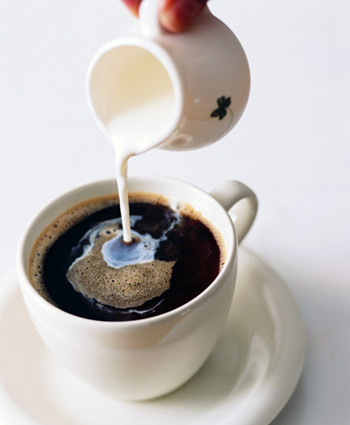The roasting and taste of coffee determine the most appropriate roasting degree.

Since the Arabs discovered the coffee beans, the first way to eat them is to put the whole fruit of the coffee into the mouth and chew it to get its juice.
Later, they ground the coffee beans from the fruit and mixed them with animal fat as a physical supplement for caravans to trade far away.
After that, around 1000 AD, it was changed to the method of boiling raw beans into soup. It was not until the 13th century that the Arabs invented the method of roasting coffee beans, so that the charming aroma of coffee was completely pulled out, so that coffee was no longer just a pick-me-up, but a worldwide drink.
Generally speaking, according to the division of baking degree, the roughest can be divided into three stages: shallow stir-frying, medium stir-frying and deep frying. Coffee beans can cause subtle changes in taste and flavor due to different degrees of roasting.
Generally speaking, if the baking degree is shallow, the sour taste is heavier. With the deepening of the baking degree, the sour taste will gradually disappear, and the bitter taste will become more prominent. What kind of roasting degree can give birth to the most delicious coffee? In fact, the depth of baking must be based on the types, characteristics, brewing methods, usage and, most importantly, personal preferences, to determine the most appropriate baking degree.
Important Notice :
前街咖啡 FrontStreet Coffee has moved to new addredd:
FrontStreet Coffee Address: 315,Donghua East Road,GuangZhou
Tel:020 38364473
- Prev

Several problems that should be paid attention to in coffee roasting what if the temperature of the oven is too high?
In order to do a good job in baking, every production link can not be ignored, the selection of materials should be fastidious, the weighing of materials should be accurate, and the operation should be careful. Baking is a science. To understand the principle of baking, we must first understand the three ways of heat conduction, convection and radiation. Conduction refers to when the heat is transmitted by the heat source, causing the surrounding molecules to vibrate and release heat, gradually moving from the high temperature to the low temperature. The transmission of stainless steel
- Next

The freshness of roasted coffee is an important factor affecting the quality of roasted coffee.
No matter what kind of coffee, freshness is an important factor affecting the quality. Consumers should first smell the fragrance when buying coffee beans. The aroma is the life of coffee quality. The climate, treatment, harvest, storage and baking technology of the place of production are all important factors affecting the aroma of coffee beans. The relationship between aroma and quality is very close. Good coffee beans have a strong aroma.
Related
- Detailed explanation of Jadeite planting Land in Panamanian Jadeite Manor introduction to the grading system of Jadeite competitive bidding, Red bid, Green bid and Rose Summer
- Story of Coffee planting in Brenka region of Costa Rica Stonehenge Manor anaerobic heavy honey treatment of flavor mouth
- What's on the barrel of Blue Mountain Coffee beans?
- Can American coffee also pull flowers? How to use hot American style to pull out a good-looking pattern?
- Can you make a cold extract with coffee beans? What is the right proportion for cold-extracted coffee formula?
- Indonesian PWN Gold Mandrine Coffee Origin Features Flavor How to Chong? Mandolin coffee is American.
- A brief introduction to the flavor characteristics of Brazilian yellow bourbon coffee beans
- What is the effect of different water quality on the flavor of cold-extracted coffee? What kind of water is best for brewing coffee?
- Why do you think of Rose Summer whenever you mention Panamanian coffee?
- Introduction to the characteristics of authentic blue mountain coffee bean producing areas? What is the CIB Coffee Authority in Jamaica?

